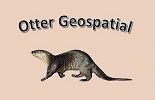A portion of the Geodata Archive is cataloged by Topic Category as indicated by folder-name prefixes that run from “01” to “19”. The numbering scheme is derived from ISO 19115, the International Standards Organization’s protocol for naming geospatial metadata.
Topic Category Codes, Descriptions & Examples |
|---|
01 – Farming (rearing of animals and/or cultivation of plants) Examples – agriculture, irrigation, aquaculture, plantations, herding, pests and diseases affecting crops and livestock |
02 – Biota (flora and/or fauna in natural environment) Examples – wildlife, vegetation, biological sciences, ecology, wilderness, sea life, wetlands, habitat, biological resources |
03 – Boundaries (legal land descriptions) Examples – political and administrative boundaries, governmental units, marine boundaries, voting districts, school districts, international boundaries |
04 – Climatology, Meteorology, Atmosphere (processes and phenomena of the atmosphere) Examples – cloud cover, weather, climate, atmospheric conditions, climate change, precipitation |
05 – Economy (economic activities, conditions, and employment) Examples – production, labor, revenue, business, commerce, industry, tourism and ecotourism, forestry, fisheries, commercial or subsistence hunting, exploration and exploitation of resources such as minerals, oil and gas |
06 – Elevation (height above or below sea level) Examples – altitude, bathymetry, digital elevation models, slope, derived products, DEMs, TINs |
07 – Environment (environmental resources, protection and conservation) Examples – environmental pollution, waste storage and treatment, environmental impact assessment, monitoring environmental risk, nature reserves, landscape, water quality, air quality, environmental modeling |
08 – Geoscientific Information (information pertaining to earth sciences) Examples – geophysical features and processes, geology, minerals, sciences dealing with the composition, structure and origin of the earth?s rocks, risks of earthquakes, volcanic activity, landslides, gravity information, soils, permafrost, hydrogeology, groundwater, erosion |
09 – Health (health, health services, human ecology, and safety) Examples – disease and illness, factors affecting health, hygiene, substance abuse, mental and physical health, health services, health care providers, public health |
10 – Imagery, Base Maps, Earth Cover (base maps) Examples – land/earth cover, topographic maps, imagery, unclassified images, annotations, digital ortho imagery |
11 – Intelligence, Military (military bases, structures, activities) Examples – barracks, training grounds, military transportation, information collection |
12 – Inland Waters (inland water features, drainage systems and characteristics) Examples – rivers and glaciers, slat lakes, water utilization plans, dams, currents, floods and flood hazards, water quality, hydrographic charts, watersheds, wetlands, hydrography |
13 – Location (positional information and services) Examples – addresses, geodetic networks, geodetic control points, postal zones and services, place names, geographic names |
14 – Oceans (features and characteristics of salt water bodies (excluding inland waters)) Examples – tides, tidal waves, coastal information, reefs, maritime, outer continental shelf submerged lands, shoreline |
15 – Planning, Cadastre (information used for appropriate actions for future use of the land) Examples – land use maps, zoning maps, cadastral surveys, land ownership, parcels, easements, tax maps, federal land ownership status, public land conveyance records |
16 – Society (characteristics of society and culture) Examples – settlements, housing, anthropology, archaeology, education, traditional beliefs, manners and customs, demographic data, tourism, recreational areas and activities, parks, recreational trails, historical sites, cultural resources, social impact assessments, crime and justice, law enforcement, census information, immigration, ethnicity |
17 – Structure (man-made construction) Examples – buildings, museums, churches, factories, housing, monuments, shops, towers, building footprints, architectural and structural plans |
18 – Transportation (means and aids for conveying persons and/or goods) Examples – roads, airports/airstrips, shipping routes, tunnels nautical charts, vehicle or vessel location, aeronautical charts, railways |
19 – Utilities, Communication (energy, water and waste systems and communications infrastructure and services) Examples – hydroelectricity, geothermal, solar and nuclear sources of energy, water purification and distribution, sewage collection and disposal, electricity and gas distribution, data communication, telecommunication, radio, communication networks |

Comments are closed.